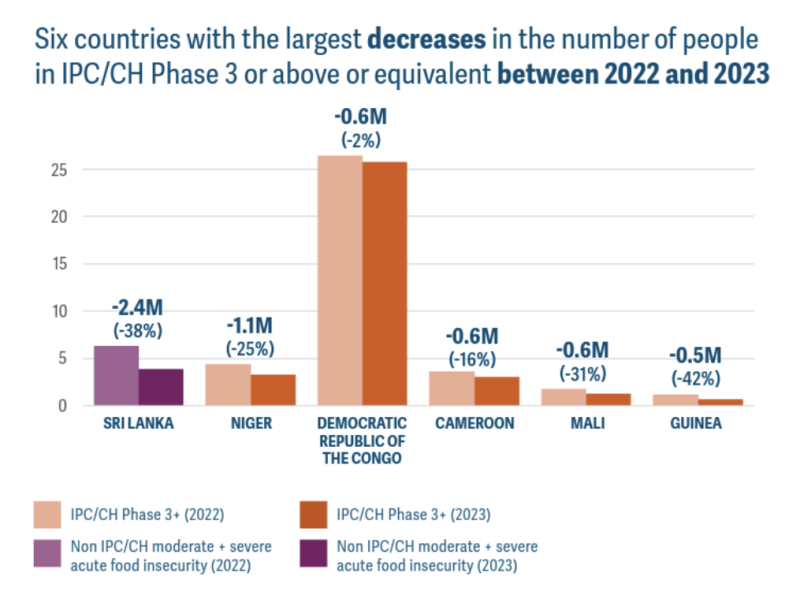The Mid-Year Update of the Global Report on Food Crisis (GRFC) 2023 estimated that 238 million people are facing high levels of acute food insecurity in 48 countries as from early August. This number represents 1 in 5 people of the total population analysed, a similar proportion than the one found in 2022.
The relatively unchanged proportion of households experiencing high levels of food insecurity hides deterioration in some countries and improvement in others. The countries where the numbers grew more are Sudan, Somalia, Burundi, Senegal, Lebanon and Haiti.
The countries experiencing the largest decrease in number of highly food insecure are Sri Lanka, Niger, Democratic Republic of Congo, Cameroon, Mali and Guinea.
The Mid-Year Update identifies the 10-food crisis with largest numbers of people facing high levels of food insecurity. In order of importance, the 10 largest food crisis are Democratic Republic of Congo, Nigeria, Sudan, Ethiopia, Afghanistan, Yemen, Bangladesh, Pakistan, South Sudan, and Somalia.
In 2022, Myanmar, Syrian Araba Republic and Ukraine were among the 10 largest food crisis; however, no new data about these three countries was made available before the publication of the report.
The report identifies conflict and insecurity as the main driver of acute food insecurity globally. Economic shocks and weather extremes are also key factors that drive food crisis. However, it acknowledges that acute food insecurity is rarely driven by a single shock or hazard, but rather by the interaction between shocks and underlying poverty, structural weaknesses and other vulnerability factors.



| Year of publication | |
| Publisher | Global Network against Food Crises (GNAFC) |
| Geographic coverage | AfghanistanAngolaBangladeshBurkina FasoBurundiCameroonCape VerdeCentral African RepublicChadDemocratic Republic of the CongoDjiboutiDominican RepublicEl SalvadorEswatiniEthiopiaGambiaGhanaGuatemalaGuineaHaitiHondurasJordanKenyaLebanonLesothoLiberiaMadagascarMalawiMaliMauritaniaMozambiqueNamibiaNicaraguaNigerNigeriaPakistanSenegalSierra LeoneSomaliaSouth SudanSri LankaSudanTanzaniaTogoUgandaYemenZambiaZimbabwe |
| Originally published | 14 Sep 2023 |
| Knowledge service | Metadata | Global Food and Nutrition Security | Food security and food crises Nutrition | FamineExtreme weather eventCountries affected by conflictFood price crisis |
| Digital Europa Thesaurus (DET) | hungerwar in Ukrainehumanitarian aideconomic conditions |
